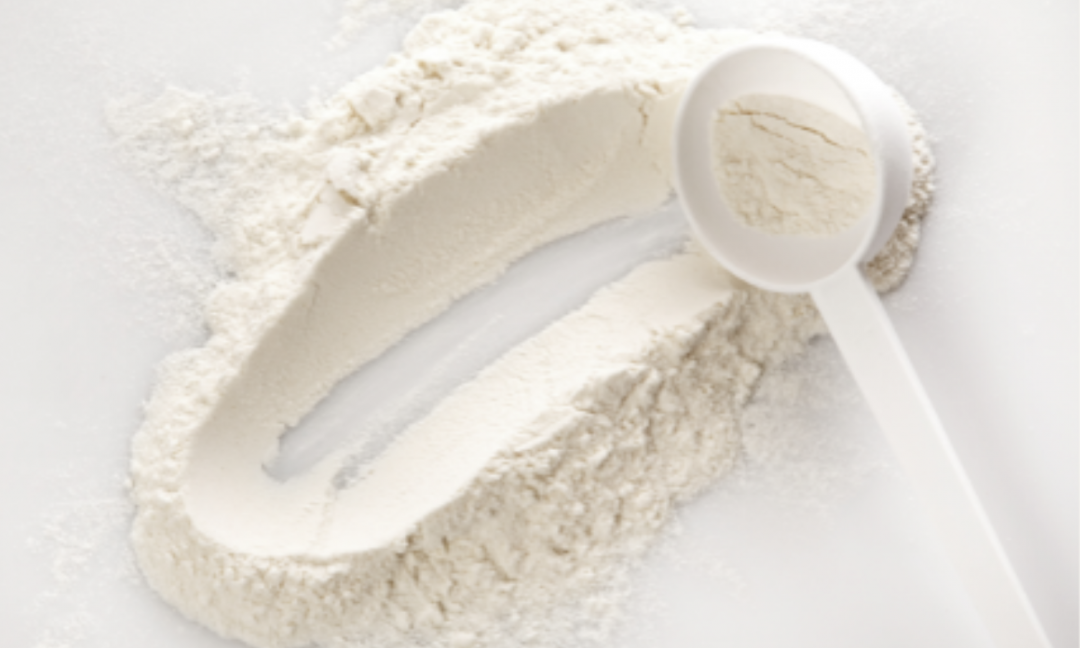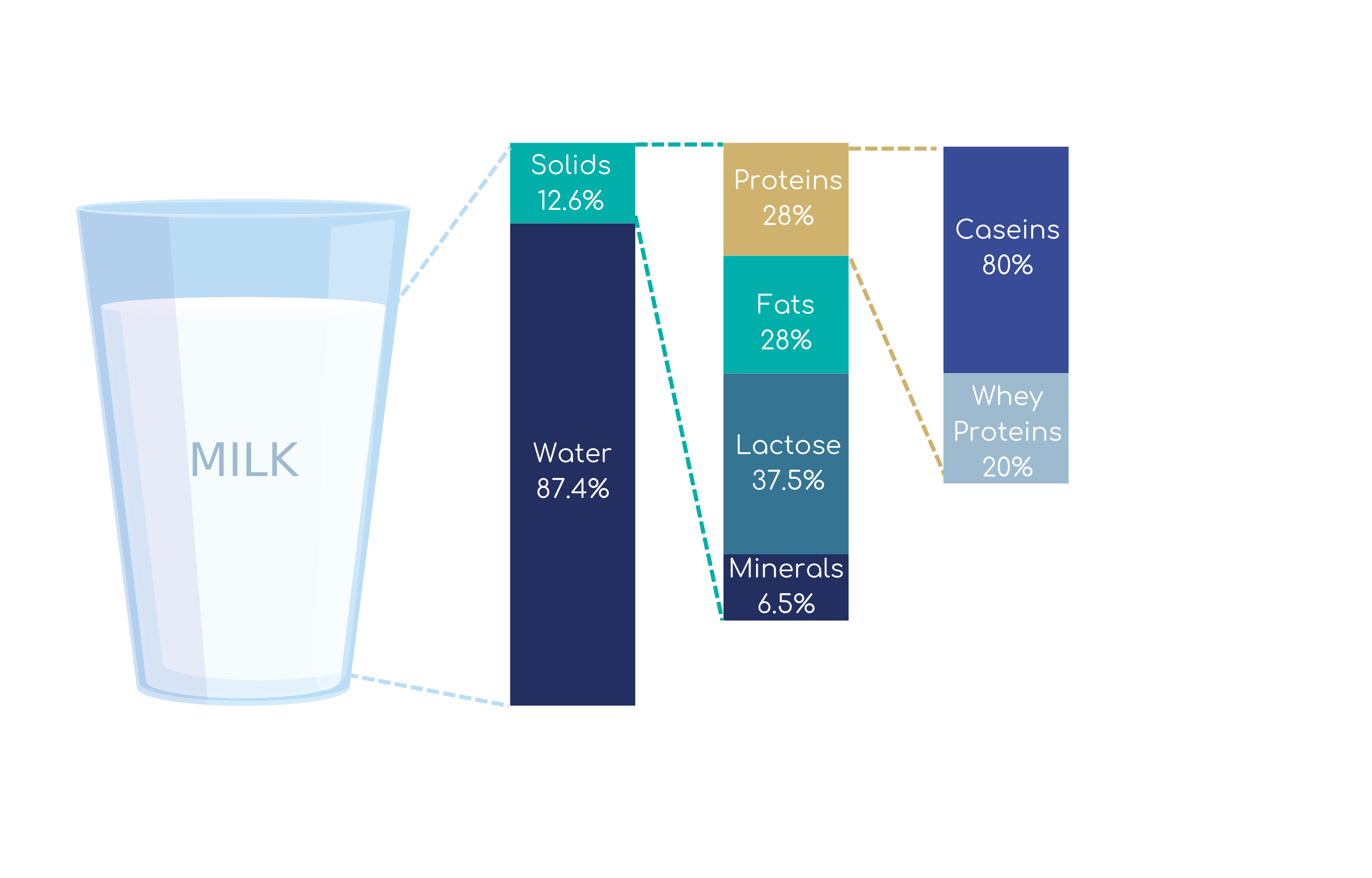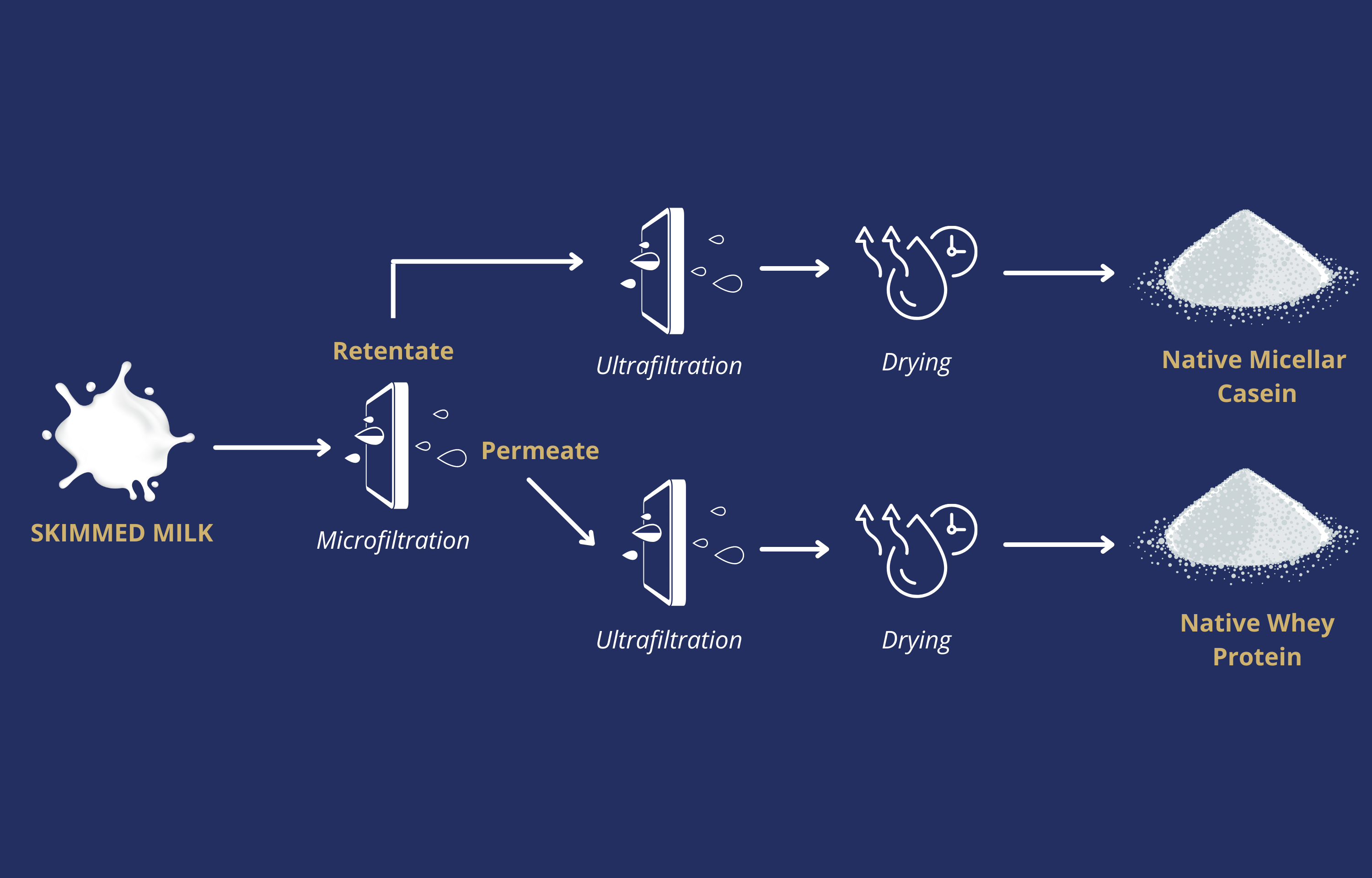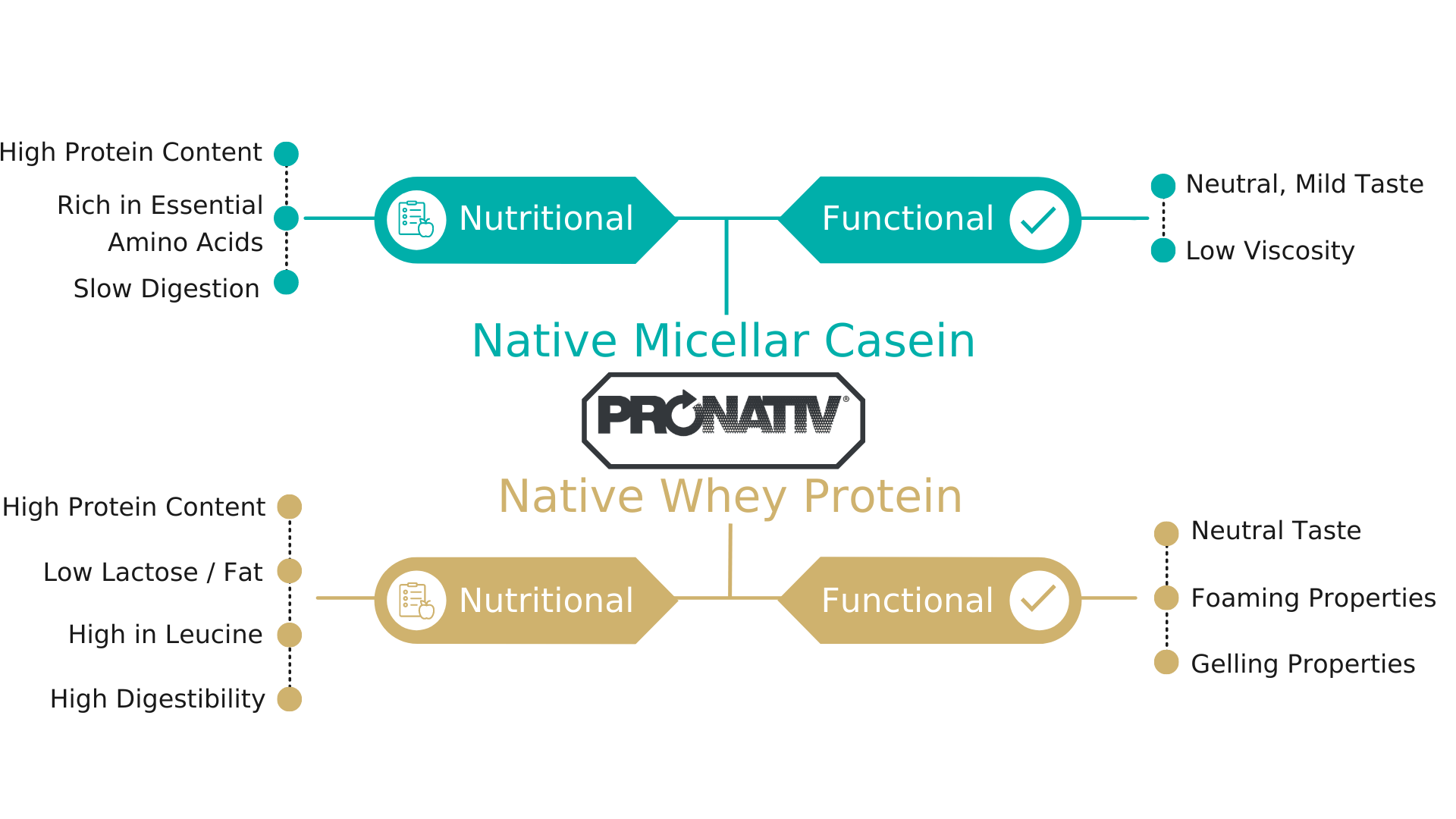
How can native proteins offer manufacturers a solution for healthy, nutritious, tasty products?
Native dairy proteins are high-quality proteins that are naturally present in milk and widely used in the food industry and nutrition sector to increase protein content and provide products with various nutritional benefits. In the food and nutrition sectors, several trends are shaping and changing consumption patterns across the world. Some have become even more pronounced since the start of the pandemic. Dairy proteins are a natural option for many food products that meet both consumer expectations and manufacturers’ requirements.
What defines native proteins?
Let’s start by reviewing the protein content of milk. Proteins make up 28% of the solid components of milk. The protein fraction of milk contains:
-
- 80% caseins
- 20% whey proteins

Milk composition
Lactalis Ingredients was a pioneer in identifying and perfecting a technique for the gentle extraction of a new protein : Pronativ® – a pure, natural native whey protein – before launching Native Micellar Casein, a new Pronativ® protein, in 2021.

Native proteins’ production process
A protein is considered to be native if it has not undergone any change to its structure or composition and when it is in its original form as found in milk. Native milk proteins are produced using a physical, non-denaturing manufacturing process based solely on membrane separation. This physical manufacturing process is carried out at a low temperature and does not include additives or chemical products. This helps to preserve the intrinsic quality of the proteins. Today, we distinguish between native whey proteins and native micellar caseins. Both are natural ingredients that can be used to reconsider many foods and nutrition applications.
A protein is considered to be native if it has not undergone any change to its structure or composition
Native milk proteins: nutritional solutions that fit the clean label trend
Health has become a priority when choosing foods. A renewed focus on health has led to an interest in healthy foods and nutritional products, particularly following the pandemic. This is apparent in the ever-increasing search for natural, healthy, and minimally processed food ingredients, and the search for clear, reliable product information. This requires manufacturers to reconsider their recipes, reduce the quantity of highly processed ingredients, and improve quality.
The only raw material in native proteins is milk, meaning they are natural ingredients that can replace additives, bypass the need for texture enhancers thanks to their properties, and formulate protein-rich foods with a short list of ingredients. Furthermore, the proteins are not denatured by heat, or any enzymatic or chemical action meaning they retain all their nutritional values.
The only raw material in native proteins is milk, meaning they are natural ingredients
Health and enjoyment
Consumers are looking for new experiences and this is reflected in what they eat, through new flavours, textures, and aromas. The properties of native milk proteins make it possible to enhance foods and beverages while offering new textures and flavours. These properties are also in demand for healthy snacks.

Pronativ Proteins’ nutritional and functional benefits
Considering consumption trends, manufacturers in the agri-food industry are looking to market healthy, high-quality products with optimised tastes and textures. Lactalis Ingredients can assist you in using milk proteins in many food and nutrition applications. To learn more, discover Lactalis Ingredients’ solutions and the native protein range : Pronativ® – Native whey protein and Pronativ® – Native micellar casein.














